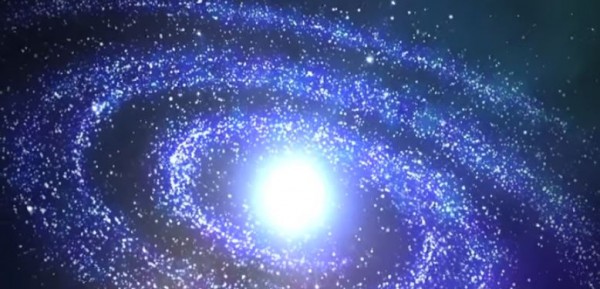By Krisana Estaura, | April 06, 2017

The "monster" galaxy known as ZF-COSMOS-20115 weighs at least three times as much as the Milky Way but ceased making stars 500 million to a billion years after the Big Bang. (YouTube)
A red and dead galaxy, which formed like a firecracker at the start of cosmic history, has three times more stars than the Milky Way.
According to the Daily Mail, a massive, inactive galaxy during the time when the universe was only 1.65 billion years old has been discovered recently.
Like Us on Facebook
The "monster" galaxy known as ZF-COSMOS-20115 weighs at least three times as much as the Milky Way but ceased making stars 500 million to a billion years after the Big Bang. However, other much smaller galaxies have continued churning out stars.
The monster galaxy has 300 billion stars in total, and astronomers are trying to determine why such a super galaxy made in less than a billion years just shut down so quickly.
According to Science News, lead author of the study Karl Glazebrook of the Swinburne University of Technology in Australia, suggested that finding the behemoth and possibly others like it may mean astronomers will have to rethink how galaxies are built and explain why some grow up fast, while others develop slowly.
Expert Peter Behroozi of the University of California, Berkeley, who was not involved in the study, applauded the discovery but said he is not convinced that it warrants a rewrite of the story of galaxy formation just yet
"The galaxy is certainly not typical, but it is consistent with the broad diversity of galaxies coming out of theoretical models," he said.
The data from Grazebrook and colleagues also assumed that the newly discovered galaxy grew to its monster mass in less than 100 million years. Based on the data they gathered, the monster galaxy created the mass of more than a 1,000 suns each year when typical galaxies at that time only generate a mass of fewer than 100 suns annually.
-
Use of Coronavirus Pandemic Drones Raises Privacy Concerns: Drones Spread Fear, Local Officials Say

-
Coronavirus Hampers The Delivery Of Lockheed Martin F-35 Stealth Fighters For 2020

-
Instagram Speeds Up Plans to Add Account Memorialization Feature Due to COVID-19 Deaths

-
NASA: Perseverance Plans to Bring 'Mars Rock' to Earth in 2031

-
600 Dead And 3,000 In The Hospital as Iranians Believed Drinking High-Concentrations of Alcohol Can Cure The Coronavirus

-
600 Dead And 3,000 In The Hospital as Iranians Believed Drinking High-Concentrations of Alcohol Can Cure The Coronavirus

-
COVID-19: Doctors, Nurses Use Virtual Reality to Learn New Skills in Treating Coronavirus Patients







